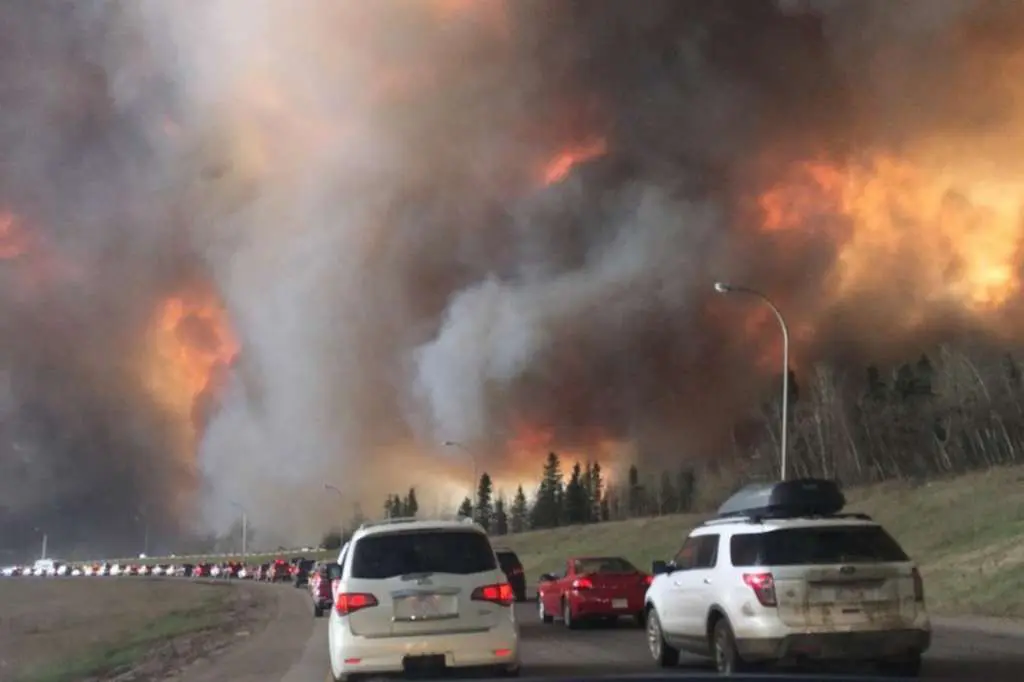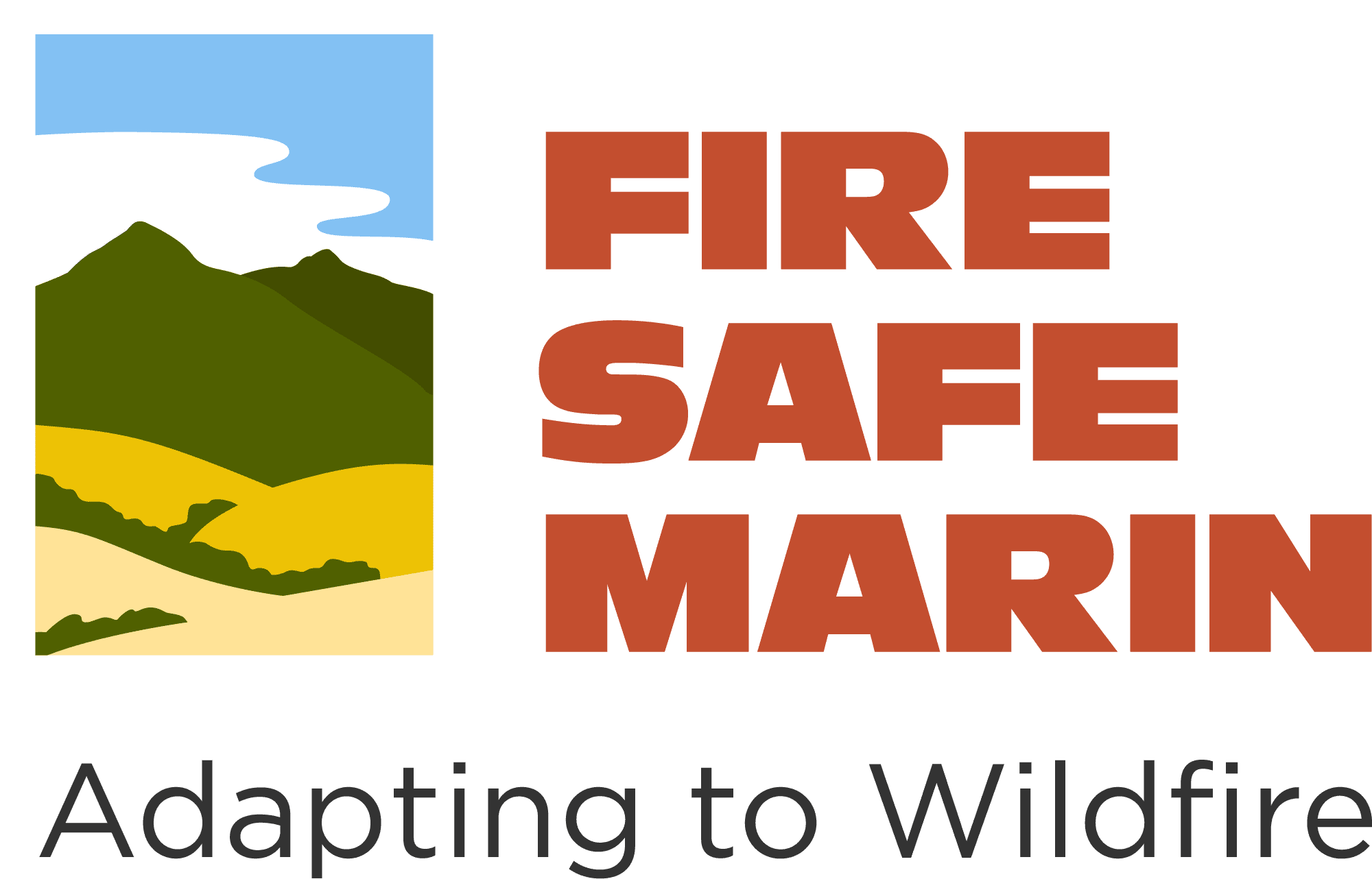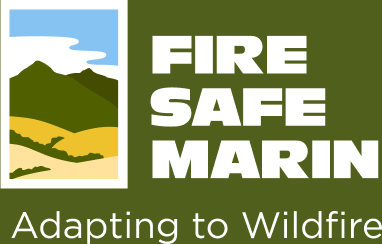
ALERTS AND NOTIFICATIONS
When a wildfire threatens your community, emergency managers will determine areas to be evacuated, and routes to use, depending upon the fire’s current and predicted location. Law enforcement officers are responsible for enforcing an evacuation order. Follow their directions promptly.
If time allows, officials will attempt to advise you of the safest evacuation routes. You must take the initiative to keep informed and alert. Listen to your radio for updates on changing conditions. Monitor Alert Marin and Nixle for notifications and updates You may be directed to temporary assembly or refuge areas to await transfer to a safe location.
CHILDREN AND SCHOOLS
Public and private schools will attempt to notify parents, and evacuate children only if time allows. Schools may need to “shelter in place” and will protect children in safe places on campus if a wildfire strikes without time to evacuate. Many Marin schools have taken steps to protect campuses with additonal defensible space and other wildfire hardening measures.
When an evacuation is ordered, parents may not be allowed in to the evacuated area to pick up students! Communicate this with your children in advance, and send them to school prepared with the tools they need to communicate and protect themselves, such as extra food, long cotton clothing, and a list of primary and alternate emergency contacts and numbers.
FIRE ROADS
Fire roads are for firefighter use only, and are not a safe option for evacuation. Stay on pavement, in your vehicle if possible. The unmaintained vegetation on fire roads, the fact that most lead uphill, and the requirement for high-clearance, 4-wheel drive vehicles makes them unsafe and unsuitable for evacuation.
Firefighters don’t evacuate uphill, don’t evacuate towards “unburned” vegetation, and don’t attempt to outrun a fire uphill. You shouldn’t either.
PAVED ROADS
Take the fastest route towards the open areas and wide roads of a valley floor – the route you normally take to the grocery store is usually the best route to evacuate by. If available, law enforcement officers will direct traffic and wave vehicles through intersections. Even during an extreme wildfire, when there may be fire on both sides of the road, you will be safer inside your vehicle than out. Keep the windows rolled up, outside vents closed, turn your lights on, and drive slowly and carefully. Don’t panic if caught in traffic. You are safer in your car than outside! Do not stop to ask law enforcement officers or firefighters for fire information.
TEMPORARY REFUGE OR ASSEMBLY AREAS
Open locations free of unburned vegetation may be safe places to wait while a fire passes. If your evacuation route is blocked or impassable, a wide parking lot, ball field, or even a house or commercial building may provide temporary shelter. Parking your car, with windows up, in a location far from vegetation or structures and waiting for the fire to pass, is often a safe option for sheltering in place. Authorities may choose to evacuate the temporary refuge areas en-masse when it’s safe to do so.
EVACUATION CENTERS
Emergency managers will attempt to provide information on safe evacuation centers if time allows. Plan to drive towards the highway 101 corridor. The Marin Civic Center Fairgrounds are a pre-designated evacuation facility and a safe location for evacuees. For small-scale local evacuations or disaster recovery and sheltering, local schools, community centers, or large parking lots may be used.
THE ROAD IS BLOCKED!
Don’t panic! Law enforcement can move a large number of vehicles through intersections. Remember that your car provides a tremendous amount of protection from heat, smoke, and embers.
- Stay calm.
- The presence of fire or flames on the roadside does not necessarily mean your road is blocked. You can usually safely drive when there is fire burning on the roadsides.
- Being stuck in traffic in your car, on unburnable pavement, is usually safer than being exposed on foot.
- If the road is blocked, try to clear the obstruction (if it’s safe to exit your vehicle).
- Turn around if the obstruction can’t be cleared.
- If an alternate route is available and your main route is blocked, take it.
- Try to drive away from the fire if possible, and take the shortest route to a valley floor if you’re on a hillside.
- Do not leave your vehicle unless there is no other option or your car is on fire. Leaving your car is a last resort and may prove deadly. You are almost always safer in your car or a building.
- Do not abandon your car in the roadway. Park it off the road if there is no other option.
- Take refuge in an open area like a ballfield, large parking lot, or shelter in yoiur car or inside a building if no quick escape route is available and flames are approaching. See “Shelter in Place,” below…
BUT MY NEIGHBORHOOD ONLY HAS ONE WAY OUT!
If you live in a “one way in, one way out” neighborhood, as is common in Marin, your escape route is predetermined.
- Use the “one-way-out” direction and leave! Drive towards your neighborhood’s exit, and to the nearest town away from the fire.
- Follow instructions in the alert messages if they provide evacuation shelter or escape route information.
- Do not attempt to evacuate by fire roads or open spaces where you might be exposed to burning vegetation. Fire roads are almost always more dangerous than being in your car on the pavement.
- But fire engines will block my escape!
- When evacuation has been ordered, the fire’s Incident Commander will instruct fire engines not to enter areas where evacuation is occurring and two-way passage is not possible. Evacuation is the number one priority for firefighters.
IF YOU ARE UNABLE TO EVACUATE ON YOUR OWN
- Ask a neighbor to assist you or give you a ride. Pre-plan a list of neighbors who may be able to assist you.
- Call 911 if you are disabled or need assistance to evacuate.
- If first responders are in your neighborhood, attempt to notify them that you require assistance.
Learn more at www.firesafemarin.org/evacuation







